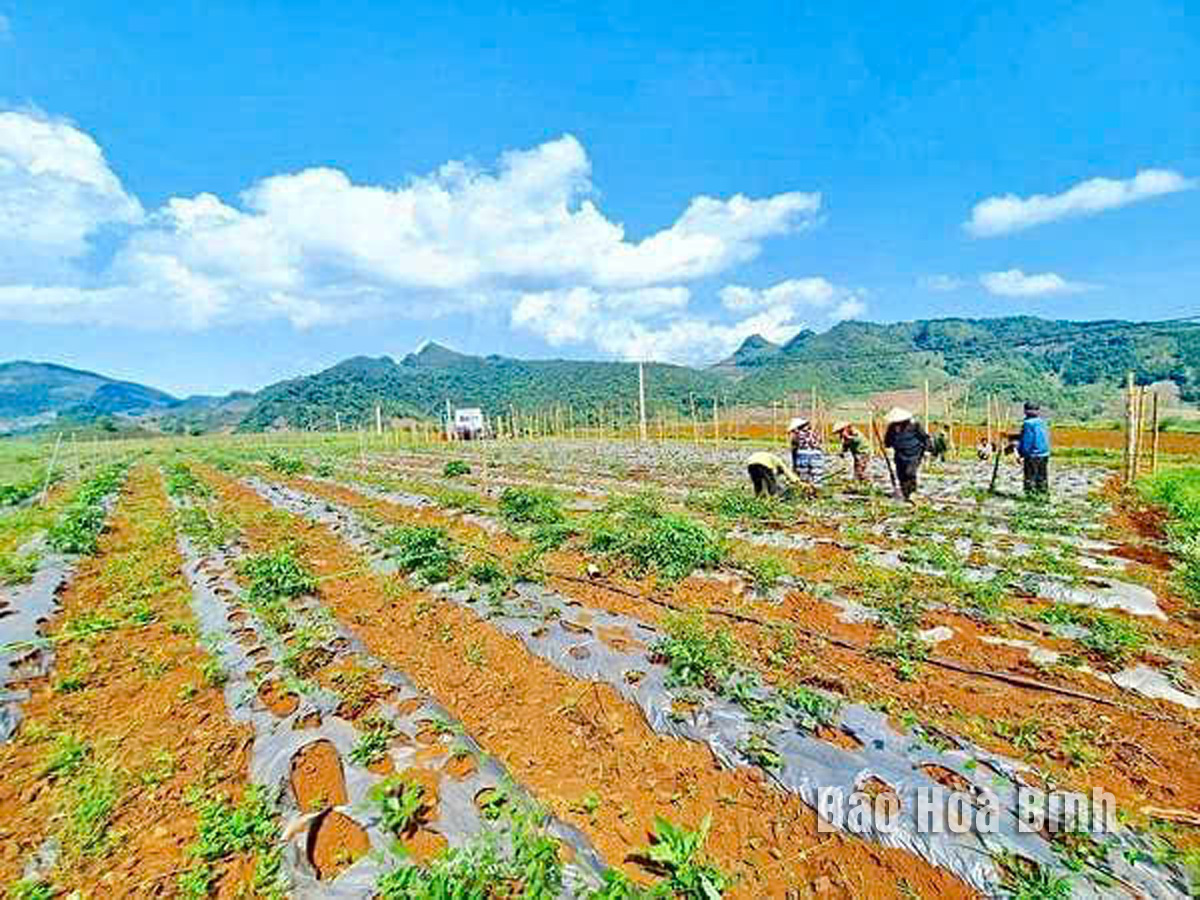
Replacing less productive crops with herbal medicines has proven to be an effective direction for many localities in Hoa Binh province.
In 2018, the Big Farm herbal cooperative leased 10 ha of mixed garden land from farmers in Men village, Yen Hoa commune (Da Bac district) to start growing several types of herbal plants.
Yen Tri commune in Yen Thuy district is one of the "bright spots" in herbal medicine development. Chairman of the communal People’s Committee Bui Phi Diep said that when embarking on the new-style rural area building scheme, the first challenge for the local authorities was how to increase the income for local residents. He added that the orientation of switching to herbal medicine cultivation on areas of less productive crops and mixed gardens aimed for this goal.
To achieve the highest effectiveness, the local authority selected high-value herbal plants and precious indigenous medicinal plants, and encourages residents to cultivate these as replacements. At the same time, it has proposed the district collaborate with herbal medicine centres and pharmaceutical companies to develop a production linkage model.
Cultivating medicinal plants generates economic value approximately three times higher than rice cultivation, helping to improve the incomes of many households in Yen Tri. The area dedicated to herbal plant cultivation in the commune has expanded to about 35 ha, attracting 45 households in the Yen Tri Agricultural Cooperative, and 100 other households to join.
Besides Yen Tri, the cultivation and development of medicinal plants have been implemented in many localities. So far, Hoa Binh has approximately 2,350 ha of medicinal plants, including 197.6 ha where the plants are intercropped on forest land.
Some of the main medicinal plants including lemongrass, solanum procumbens, and celastrus hindsii, with yearly average outputs of 11,000 tonnes, 1,200 tonnes and 1,620 tonnes, respectively. Additionally, there are various naturally harvested medicinal plants, such as cordyceps, passionflower, Paris polyphylla smith, and anoectochilus.
In recent years, the provincial authorities have issued many mechanisms and policies to encourage investment in planting and processing of medicinal plants. Projects and socio-economic development programmes in ethnic minority and mountainous areas and the "One Commune, One Product" programme have helped promote and encourage economic sectors to invest in the cultivation and and processing of medicinal plants.
Currently, the province has 13 facilities and enterprises engaged in the purchasing and preliminary processing of medicinal plants, along with 10 small-scale processing establishments run by enterprises and households. These efforts have initially created stable outlets for medicinal plants in the province.
According to the leadership of the provincial Department of Agriculture and Rural Development, in the coming time, based on natural conditions, market demand, economic value, and export potential, the locality will develop a list of prioritised medicinal plants for development. Additionally, it will establish mechanisms, policies, and support plans for the cultivation, development, and harvesting of medicinal plants in special-use forests, protective forests, and production forests; as well as renting land for medicinal plant development; in line with forest management regulations and the provisions of the Land Law in 2024.
Since the beginning of this year, under the direction of the Department of Agriculture and Environment, the Sub-Department of Agricultural, Forestry, and Fishery Product Quality Management has strengthened the integration of the professional activities to promote and guide the organizations and individuals in the production and trading of agricultural, forestry, and fishery products to comply with the legal regulations regarding the use of chemicals, pesticides and veterinary medicines in crop cultivation, livestock farming and aquaculture. They also provide guidance to processing and manufacturing establishments on keeping the records to trace the product origins and using food additives from the approved list according to the regulations.
Hoa Binh province saw a significant rise in state budget revenue in the first two months of 2025, heard a meeting chaired by Vice Chairman of the provincial People’s Committee Quach Tat Liem.
Ha Thi Ha Chi, a 26-year-old graduate in law, has taken an unconventional path by returning to her hometown in Mai Chau district to establish the Tong Dau Cooperative, creating stable jobs for local women and bringing Thai ethnic brocade weaving to the global market.
As the Lunar New Year 2025 approached, pork prices surged, creating a profitable season for farmers in Tan Vinh commune, Luong Son district. Taking advantage of the rising demand, Can Minh Son, a farmer from Coi hamlet, sold over 30 pigs at 69,000 VND/kg, each weighing more than 100 kg. After deducting expenses, his family earned a profit of over 50 million VND.
alternate member of the Central Party Committee, Secretary of the Hoa Binh provincial Party Committee Nguyen Phi Long on March 5 had a working session with Yan Jiehe, Founder and Chairman of the China Pacific Construction Group, one of China's largest private corporations in the field of transport infrastructure. Deputy Secretary of the provincial Party Committee, Chairman of the provincial People's Committee Bui Duc Hinh and leaders of provincial departments and sectors also attended the working session.
The electronic printed circuit board (PCB) manufacturing and processing plant of Japan’s Meiko Group, located at Da River Left Bank Industrial Park in Hoa Binh city with a total investment of over 200 million USD, is expected to create thousands of jobs and make a significant contribution to the local budget.



